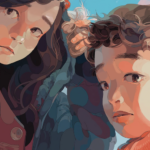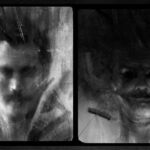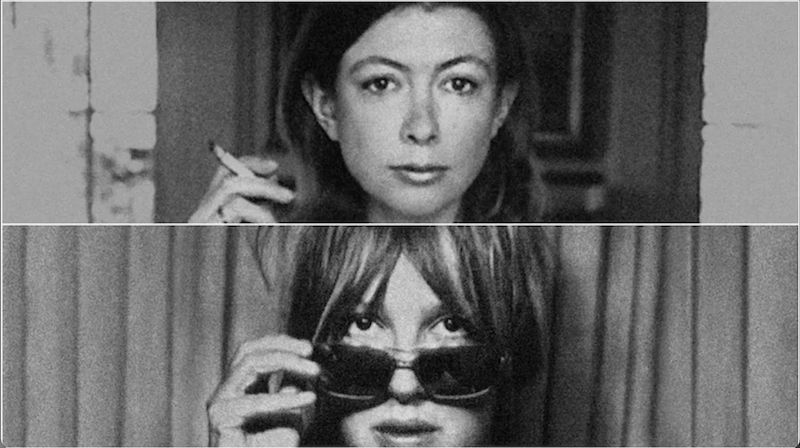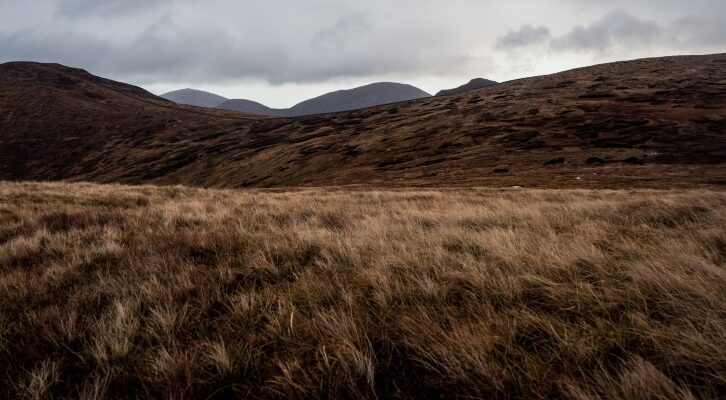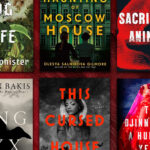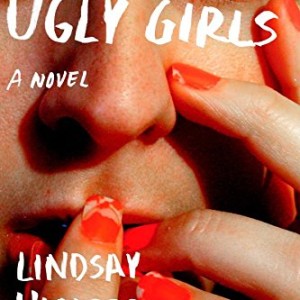Seven Great Novels Written By Poets
Fiction In Love With Language
My guess is that many, perhaps most writers—memoirists and journalists included— start as poets. Poetry certainly doesn’t need to become something else, but it may prove a decent training ground for innovative fiction more often than fiction proves a training ground for good poetry. An extraordinary attentiveness to language not only line by line but word by word characterizes novels by poets and, to my mind, distinguishes them.

An Imaginary Life, David Malouf
The Australian writer David Malouf started out as a poet (and hasn’t stopped writing poetry). He had two collections of poems and a third in production before his first novel, Johnno, was released in 1975. It’s his second novel that took my breath away. An Imaginary Life, one of the quietest novels I’d ever read, follows Ovid into exile—into a land of barbarian tongues and wind and observations as sensitive and underdetermined as those we encounter in Gerard Manley Hopkins’s notebooks. As with many novels written by poets, dialogue isn’t a driving force in An Imaginary Life. Maybe that’s the last thing poets learn, the element most foreign to poetry.

The Hanky of Pippin’s Daughter, Rosmarie Waldrop
In poet Rosmarie Waldrop’s first novel, The Hanky of Pippin’s Daughter, an excavation of familial relations and memories of childhood in Germany during Hitler’s rise to power, epistolary exchanges substitute for dialogue as two sisters write to each other about their parents’ bad marriage and their mother’s possible affair with a Jewish man who has disappeared in the war. All the while the narrator copies out and mails letters, trying to close in on a past she thought she had abandoned, she realizes that “As my memory lumbers toward them, the parents retreat a little farther each time. They leave an image I pounce on, happy for a moment till I realize it’s a decoy. A decoy I have manufactured.” Broken into sections with titles like “Portrait of Frederika as a Control Tower,” Waldrop’s examination of a private domestic war inside a world war might be considered in relation to Gertrude Stein’s Lifting Belly, the celebration of an erotic love life inside the same world war.

Azorno, Inger Christensen
Maybe dialogue and repartee simply don’t grow naturally out of the silences poets are accustomed to cultivating. It’s letters again that constitute one of the main devices and pleasures of Danish poet Inger Christensen’s novel Azorno. In zinger exchanges, four or five women argue about which of them is the central character of a novel—written by Sampel, Sampel’s wife, or someone named Azorno?—that includes passages penned by the disputative women themselves, sometimes under pseudonyms. Famously, the novel begins: “I’ve learned that I’m the woman he first meets on page eight.”

10:04, Ben Lerner
The inclination for an author to invent characters who are also writers and whose writing is nestled into a larger fiction characterizes quite a few novels by poets. Such is the case with Ben Lerner’s magnificent 10:04. Its second part consists of the entire story that the main character wrestles to write through part one. Meanwhile, the narrator’s meditations on other poets, on Walt Whitman, Robert Creeley, and William Bronk, prod him to put aside his novel-in-progress in order to write the poetry which seamlessly joins prose passages of the “actual” novel.

Nylund the Sarcographer, Joyelle McSweeney
A radical vision of writing through the flesh governs the protagonist and the prose of Nyland the Sarcographer by Joyelle McSweeney. Irreverent, energetic and balletic as Jean Genet, someone else who first published as a poet, McSweeney speed-deals a compendium of cultural and literary references, parodying the noir genre even while she squeezes from it every last jaw-clenched cliche and ramps up the atmospherics at the expense of cause and effect. We navigate her paragraphs on their brilliantly constructed rhythmic waves: “Here is hair: thick mustaches and lovely fat waves that dip back and away; braids; blond hair declaring blackness at the roots; sallow girls whose hair and skin and disdain seem all made of the same materials like gold thinned with milk. A beaten egg. In the rows facing forward. Nothing is before them. Above them, Steve McQueen demonstrates the persecution of the car chase. He leads by example.”

This Fatal Looking Glass, Martin Corless-Smith
Drawing from memoir, poetry, aphorism and daybook, the poet Martin Corless-Smith’s beautiful first novel, This Fatal Looking Glass, reads like an accident scene before the police arrive: it’s quiet, haunted, and speculative. A few characters are developed enough so that the reader feels a real friendship between two men and the anxiety and grief of the protagonist who, lurching between two women and two countries, flails with the shifting demands of love, responsibility, and fatherhood. But more than character or plot, it is the quality of the language, so sparked with insights about art, failure, resistance, eros, and literature, that makes the book memorable. It’s a novel focused upon an examination of the self—ourselves—and on the links between desire and guilt, hope and refusal.

Coming Through Slaughter, Michael Ondaatje
Although Michael Ondaatje has been hit up too often at literary parties by drunk young men with barber’s-pole eyes who “just need to say” that The Collected Works of Billy the Kid was the last worthwhile thing he ever wrote, most of the rest of us recognize Billy the Kid as a transition from Ondaatje’s early books of poems like The Dainty Monsters and The Man with Seven Toes to Coming Through Slaughter, the first of a series of unusual and unforgettable novels. Pick out at random any paragraph from Coming Through Slaughter and you are saturated in sensory detail: “I must get up and move through the bodies in the air. To the first slow kiss in the cloth of her right shoulder into the skin of her neck, blowing my nervousness against the almost cold hair for she has been walking outside. My fingers into her hair like a comb till the hair is tight against the unused nerves between my fingers. The taste the pollen in her right ear….” The book, as you remember, is a paean to Buddy Bolden, the great New Orleans trumpet player (about whom very little is known). But Ondaatje surely wrote the novel in crayfish juice, sweat, and sexual fluid. It is relentlessly synesthetic—music, smell, and image open out of each other on every page like flowers of a night-blooming cereus.
*I imagine that when the plane goes down, the long-awaited novel by John Keene, who also started as a poet, will be open in my lap. (Take your time, John).
Feature image of King Oliver’s Creole Jazz Band, c. 1920.



